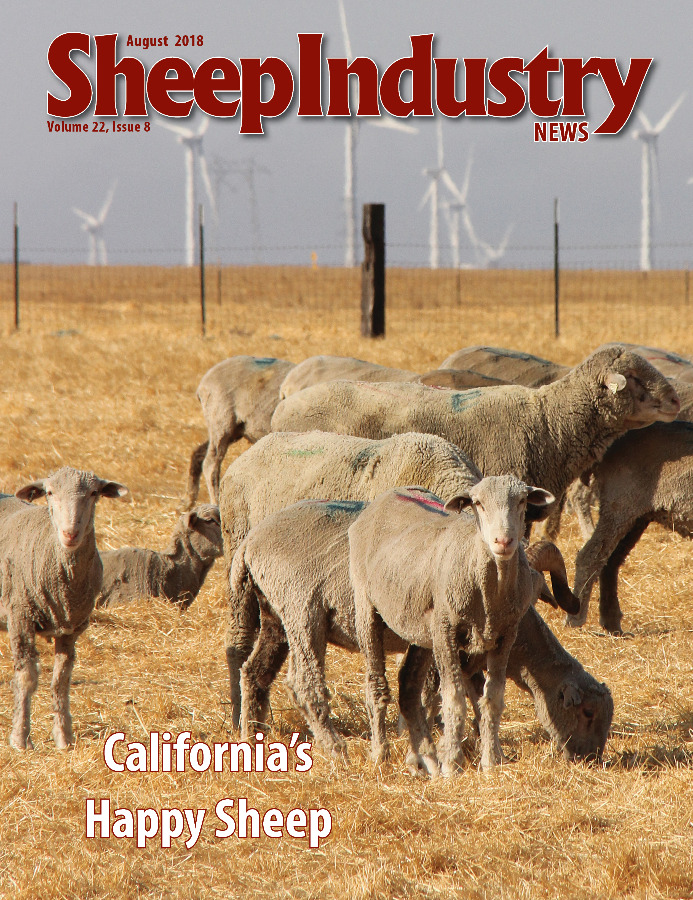
- August 2018
- President’s Notes
- Jerry King Cartoon
- ALB White Paper Calls for Industry Changes
- Japan Reopens to American Lamb
- Ninth Circuit Court Hears Montana Grazing Appeal
- Superior Farms Looks for Innovation in the Sheep Tank
- San Francisco Lamb Jam
- Fear Mongering & The Wild Sheep Foundation
- Around the States
- Market Report
- The Last Word
Ninth Circuit Court Hears Montana Grazing Appeal
JAMES BROWN
Attorney at Law
On July 9, a three-judge panel of the Ninth Circuit Court of Appeals heard oral arguments on the appeal filed by the Gallatin Wildlife Association challenging a Montana district court’s decision to deny Gallatin Wildlife’s request for the court to prohibit domestic sheep grazing within the Beaverhead-Deerlodge National Forest in Montana.
In 2015, Gallatin Wildlife Association and other groups filed a wide-ranging complaint against the United States Forest Service asserting that the 2009 revised forest plan for the Beaverhead-Deerlodge National Forest located in Southwest Montana violated NEPA by, among other things, failing to adequately protect grizzly bears and the Greenhorn Bighorn Sheep Herd. The grizzly bear claims were ultimately dropped by Gallatin Wildlife during the course of the legal proceedings.
One of the claims for relief sought by the Gallatin Wildlife Association was for the district court to issue an order prohibiting the Helle, Konen and Rebish families of Dillon, Mont., from continuing to utilize their domestic sheep grazing allotments within the forest. The families have been utilizing these allotments as part of their operations for roughly 80 years, and domestic sheep grazing has been transpiring within the Beaverhead-Deerlodge National Forest since prior to the time the forest was created.
In 2016, the federal district court awarded judgment to Gallatin Wildlife on two of its three NEPA violation claims. The district court denied Gallatin Wildlife Association’s claim that the methodology chosen by the U.S. Forest Service for analyzing the adequacy of bighorn sheep habitat within the forest was inadequate to maintain the viability of the Greenhorn herd.
The court’s chosen remedy for the NEPA violations was to remand the forest plan to the USFS for the agency to conduct supplemental environmental analysis on a Memorandum of Understanding entered by and between the sheep producers, Montana Fish Wildlife and Parks, the Bureau of Land Management and the USFS, which such MOU outlines the management steps to be taken to ensure separation between the bighorn sheep and domestic sheep flocks. The MOU was entered around the time that Montana FWP introduced bighorns into the Gravely Mountain range of Montana in 2002-2003. Further, the court ordered the USFS to conduct sight specific environmental analysis on the grazing allotments to determine whether the presence of the domestic sheep could cause harm to the bighorn sheep herd.
The court denied Gallatin Wildlife’s request that the court issue an order enjoining the families from utilizing their grazing permits. This denial was consistent with the district court’s denial of Gallatin Wildlife’s motion for preliminary injunction filed at the time of the start of the case which such request also sought the same court relief – to prohibit the producers from utilizing their grazing permits.
In 2017, Gallatin Wildlife filed an appeal to the Ninth Circuit Court of Appeals challenging the court’s denial of its various injunction requests, as well as the court’s ruling in favor of the USFS on its viability methodology claim. While that appeal was pending, Gallatin Wildlife again filed a request with the Montana Federal District Court to enjoin domestic sheep grazing for the 2018 grazing season pending completion of the Ninth Circuit Court proceedings. The district court denied that injunction motion as well in April of 2018.
On appeal, the USFS and intervenor parties, Helle Livestock, et. al, the Montana Wool Growers Association, and the American Sheep Industry Association argued that the Ninth Circuit Court proceedings should be dismissed for lack of jurisdiction for the appellate court to hear the case. The industry parties argued that, because the Montana Federal District Court has kept jurisdiction of the case until such time as the USFS completes its court-ordered supplemental environmental analysis, Gallatin Wildlife’s appeal was not ripe for review.
At the Ninth Circuit hearing, all but two questions posed by the judges to the attorneys related to whether the court had jurisdiction to hear the appeal at this stage with the district court specifically stating it would await the supplemental analysis before entering a final judgment in the lower court case. Based on the line of questioning, it appears that ASI’s and MWGA’s argument as to jurisdiction, may prevail. At the hearing, the court did not indicate when it would rule on the merits of Gallatin Wildlife Association’s appeal.
Even if the Ninth Circuit Court dismisses Gallatin’s appeal, the case will not be over. The USFS has indicated that its supplemental environmental analysis will be analyzed in late September to early October. The district court could still issue an injunction prohibiting grazing at that time.
John Helle, one of the livestock producers, at issue has summarized this case well. This case is a perfect example of the abuse of the Equal Access to Justice Act in that groups – such as Gallatin Wildlife – will continue to propagate court proceedings in order to run up their attorneys’ fees and costs with the hope of being deemed a prevailing party under the act in order to be paid by the taxpayers for litigation such as this.
John Helle is slated to testify before Congress later this month and will surely point out the fact that Gallatin Wildlife has to date, sought four injunctions against their livestock operations during the course of the three-year legal proceedings.

